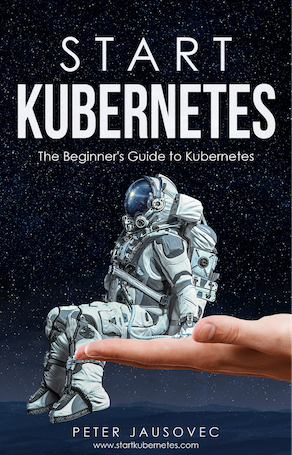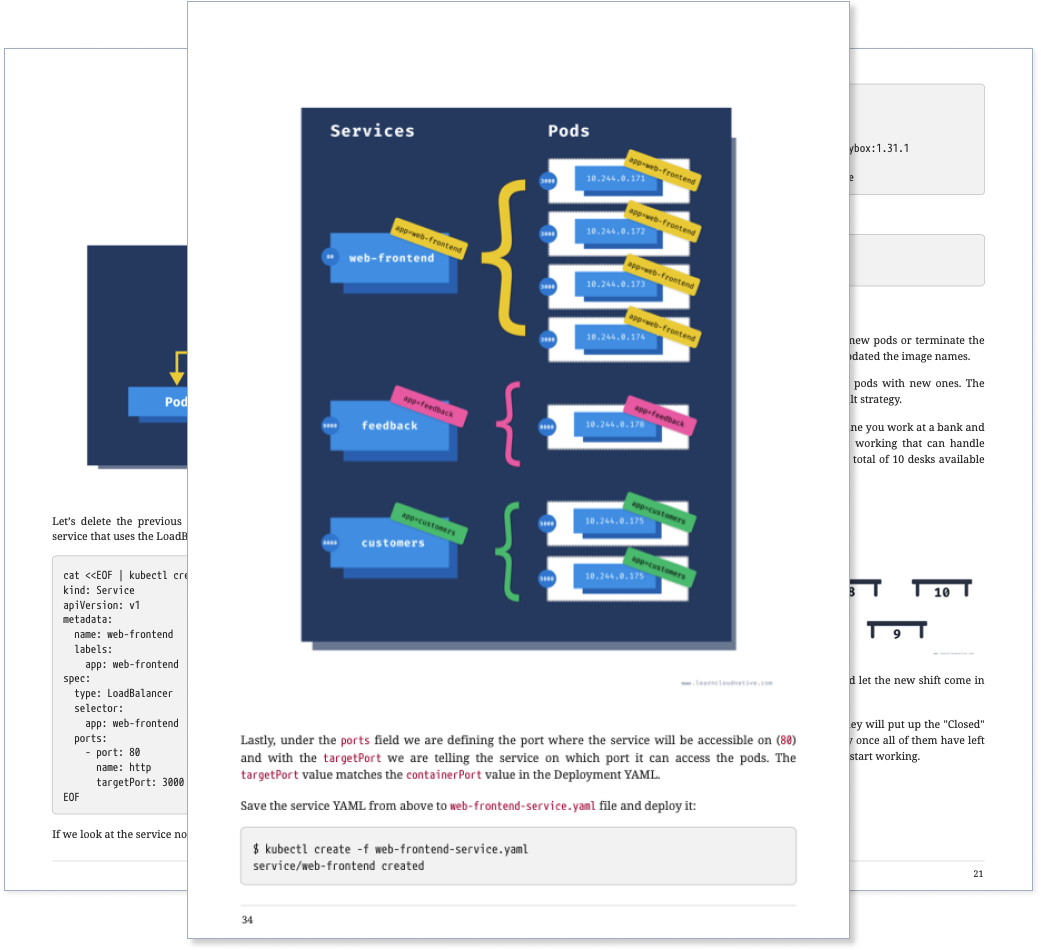Harness the power ofKubernetes
A complete course to get you up-to speed with the most popular container orchestrator - Kubernetes.

features
Why Kubernetes?
In recent years, Kubernetes has risen to become a leading platform for cloud-native technology. Its container orchestration capabilities have allowed for much smoother operation of applications.
Service discovery & load balancing
Not only will your application adapt to any unfamiliar service discovery mechanism, but each Pod within the application will get its very own IP address that can be accessed with a single DNS. You can also load-balance across a group of Pods!
Configuration & secret management
You’ll never have to rebuild your applications in order to update your configuration settings or secrets.
Rollouts & rollbacks
Piece by piece, introduce changes to your application and configuration that will allow for close monitoring and quick recovery in case of any failures.
Self-healing
When needed, Kubernetes will automatically restart and reschedule containers to ensure a healthy flow of traffic through applications.
Scaling
Scale your application with a single command or sit back and allow the application to scale on auto-pilot based off of your CPU usage.
Storage management
Quickly mount your desired storage system directly to the application; local, cloud-provider, network system, and more.
"All of these features sound great! But how hard is it to learn Kubernetes...?"
In short, Kubernetes likes to do things its own way. While mastering the platform is really just a matter of grasping a few concepts, it can feel overwhelming to the untrained eye.
Take, for example, the simple action of deploying and running an application inside Kubernetes. You have to:
- Launch a Deployment that represents your application
- Then, a ReplicaSet to control the Scaling
- Next, you need a Service and a DNS name to access the application
- Plus at least one or more Pods with containers
- AND FINALLY, you can set the Configuration and/or Secrets
That’s FIVE different processes that must work seamlessly to complete one simple action. And while it’s a dream for experienced users, Kubernetes also allows for tweaks and configurations to each of those steps that drastically change their entire behavior.
To the untrained user, this complexity can be too much to handle and the terminology is completely new!
I remember when I first started learning…
"What the heck is a Pod?!"
"Why do I need Deployments?"
"ReplicaSets, Ingress, Volumes, RBAC... What is all of this?!?"
I have created this course to flatten the learning curve of Kubernetes and make sure it can be a solid tool for anyone who needs it!
Course Overview
Everything you need to master Kubernetes.
The E-Book
Available in PDF, Mobi, and ePub formats, this 230-page book is packed full of all the basic concepts and introductions into the more complex capabilities. And I’ve made it an exciting read with detailed explanations, colorful diagrams, practical examples and more!


Video Tutorials
For all my visual learners, this one is for you! This pack of 23 videos will walk you through and explain Kubernetes concepts, and so much more! Because some things you really need to see to get.
You can get access to all videos in the course for free on my YouTube channel→.
Full YAML
You can find the YAML files for all examples used in the course in this Github repository→
Who is this course for?
If you are a DevOps engineer, developer, sysadmin, or a solution architect who wants to make the transition into Kubernetes an absolute breeze, this course is your key to success. For the best results, we recommend users to have a basic knowledge of Docker and how to run a container or build an image. But other than that, this course can take you from scratch to master!
After completing this course, you'll be able to:
- Deploy & Run Containerized Applications
- Perform Updates & Rollbacks
- Use Kubernetes CLI to interact with Clusters
- Understand All Kubernetes Resources & How to Use Them
- Combine Multiple Containers Within a Pod
- Configure Containers Using Secrets, Volumes & Configuration Maps
- Run Stateful Applications
- Scale Applications
- Extend Kubernetes Using CRDs and Operators
The list goes on!
About the Author
